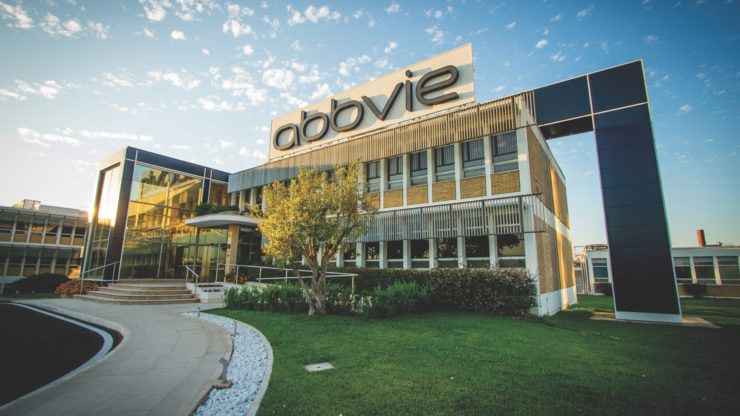Pharmaceutical (PPH) stocks have done relatively well this year. The closely watched iShares US Pharmaceutical ETF (IHE) stock has jumped by 16.5%, slightly beating the S&P 500 index, which has risen by 16.3%.
The VanEck Vectors Pharmaceutical ETF (PPH) is up by over 20%, making it one of the best-performing firms in the industry. This article looks at some of the top stocks to look at, including Bristol-Myers Squibb (BMY), Pfizer (PFE), and AbbVie.
Bristol-Myers Squibb | BMY
Bristol-Myers Squibb is a leading pharmaceutical company in the United States. It focuses on top industries like oncology, hematology, immunology, cardiovascular, and neurosciences.
Over the years, the company has grown its business organically and through acquisitions. Its biggest buyout was Centene, which it paid $74 billion. Most recently, it bought Mirati, a deal that helped it expand its oncology business.
The most recent financial results showed that Bristol-Myers made $12.2 billion in quarterly revenue while its GAAP earnings per share retreated to 83 cents. Most of its revenues were from Eliquis and Opdivo, which brought in $2.5 billion and $1.4 billion, respectively.
BMY is often seen as a good pharma company because of its diversified portfolio and safe dividends, whose yield stands at 4.80%.
Bristol-Myers Squibb stock has not done well in the past few months as it crashed from over $75 in 2022 to below $50 in July. Recently, however, the stock has jumped by about 28% to trade at $50. It has moved back to the 61.8% Fibonacci Retracement point.
BMY shares also did a death cross pattern in December, which explains why it retreated for the most of the year. On the positive side, it has formed a bullish flag chart pattern, a popular bullish sign.
Therefore, the outlook for the stock is moderately bullish, with the next point to watch being the 200-day moving average point at $55.
Pfizer | PFE
Pfizer is one of the most popular pharmaceutical companies in the world. Its popularity surged during the Covid-19 pandemic as it became one of the top sellers of vaccines.
Pfizer is also known for its value destruction over the years. In the past two decades, the company has spent over $300 billion in acquisitions, including the $90 billion buyout of Warner-Lambert and the $60 billion purchase of Pharmacia. It also acquired Wyeth for $68 billion and Hospira for $17 billion. Yet today, Pfizer has a market cap of over $161 billion.
Like BMY, Pfizer stock price has not done well in the last two years because of the Covid business. It dropped from over $54 in 2021 to below $30 today. It also formed a death cross pattern on the weekly chart in October last year, leading to more downside.
Pfizer stock has attempted to bounce back after its recent financial results and was trading at $28.50. Still, it remains below the 50-week and 200-week moving averages, meaning that bears are still in control.
Therefore, the outlook for the stock is moderately bearish, with the next point to watch being the year-to-date low of $24.56, which is about 13.7% below the current level.
AbbVie | ABBV
AbbVie, unlike BMY and Pfizer, has been one of the most popular pharma companies in Wall Street. It has surged to a record high of near $200, meaning that it has jumped by over 240% in the last five years. It has also rallied by 27% this year.
AbbVie focuses its business on key areas like immunology, oncology, neuroscience, eyecare, and aesthetics. Its most important product is Humira, a drug used to treat arthritis and Crohn’s disease.
Most recently, the company has announced that it was developing a weight loss drug in a bid to compete with the likes of Novo Nordisk and Eli Lilly.
AbbVie has done better than BMW and Pfizer because most of its growth has been organic. While it has spent billions in acquisitions, it has not been as aggressive. AbbVie’s top acquisitions were the $63 billion buyout of Allergan and the $21 billion buyout of Pharmacyclics. It bought ImmunoGen recently for $10.1 billion.
The most recent quarterly results showed that AbbVie’s revenue stood at over $14.6 billion in the second quarter, up from $13.8 billion in the previous quarter. Its net earnings dropped sharply to $1.3 billion.
The daily chart shows that the ABBV share price peaked at $199.78 and has retreated slightly to $192 after earnings. It has remained above all moving averages, meaning that this retreat is part of its profit-taking.
AbbVie also remains above the key resistance level at $180, its highest point in March this year. By moving above that level, the stock invalidated the double-top pattern that was forming before that.
Therefore, AbbVie stock has more upside in the long term. However, there is a risk that it will pullback in the coming weeks as sellers target the support at $179.61.
The post Pharma stocks analysis: Pfizer, Bristol-Myers Squibb, AbbVie appeared first on Invezz
